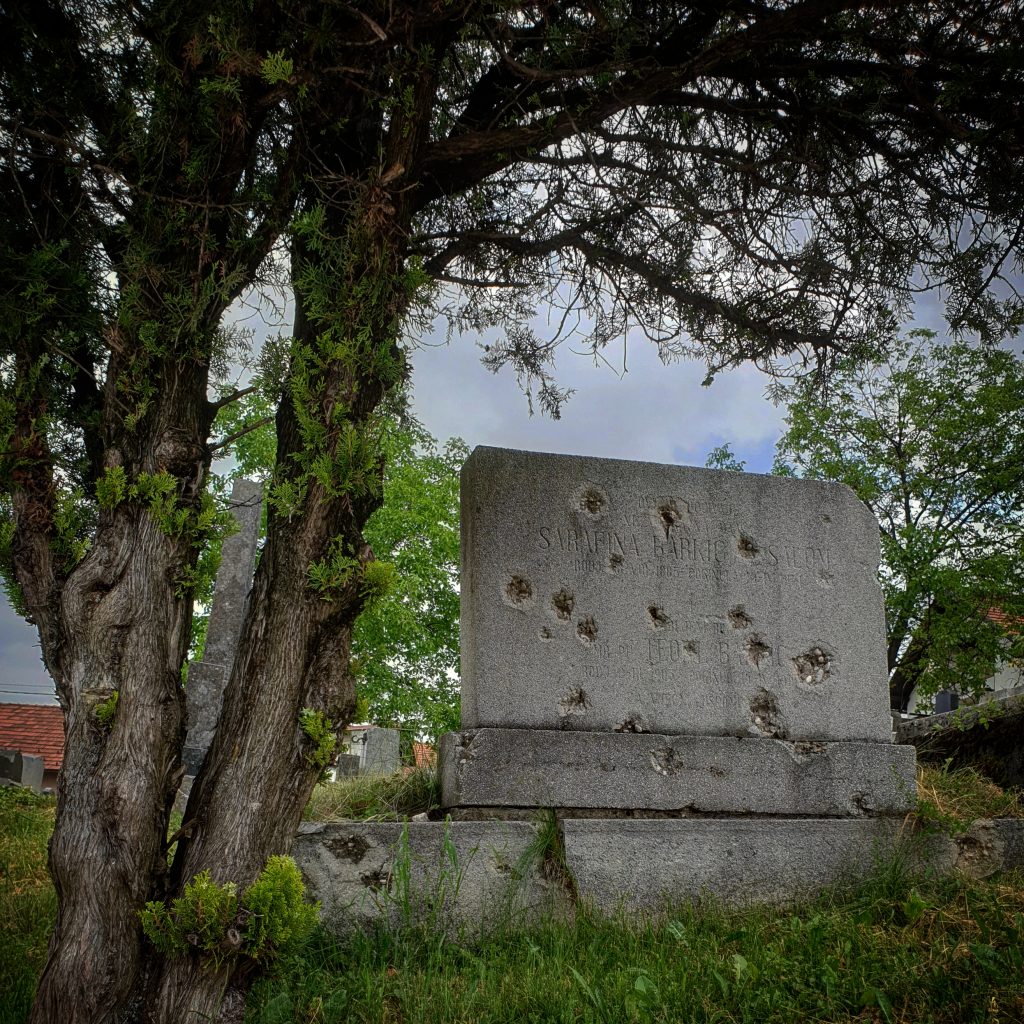On our annual action-packed Balkan Badlands tour, we tour the fascinating Balkan Peninsula from Croatia to Albania taking in 5 countries in 12 days. In contrast to the warm-hearted and friendly people of the region, the history of the Balkans is harsh and violent. Historical occupation from the Ottomans, Fascist Italy, Germany, and the Soviets – and the bloodthirsty collapse of Yugoslavia in the 1990s – has led to the formation of numerous dark history locations. We checked out many on our recent tour:
5) Skull Tower, Nis, Serbia

A perfect midway stop between Belgrade and Kosovo is the city of Nis (pronounced Nish). The city itself is typical of the Balkans, with an Ottoman-era fortress and pretty pedestrian streets full of coffee shops and bars. But just on the outskirts of the city centre is Skull Tower. During the Battle of Čegar in 1809 – a Serbian rebellion against the Ottoman Empire – the Serbs found themselves surrounded on all sides. Rather than facing capture and torture followed by death or enslavement, the Serb commander Stevan Sinđelić decided to make an executive decision to blow up his army’s powder stores. This obliterated his men and most of the surrounding Turks.
After the battle, the Ottoman Pasha (an Ottoman-era rank similar to that of an English knight) was thirsty for revenge and ordered all of the rebels be beheaded. Their skulls were then stripped of their flesh, stuffed and placed in a square tower on the old road from Istanbul to Belgrade. This was hastily completed and for decades served as a grisly reminder of what happens to those who challenged Ottoman rule. When the Ottoman Empire collapsed, locals removed some of the remains to give them a proper burial. Today, the wall remains encased in a tower that is open to the public and serves as a reminder to the brutal cost of Serbian liberation. Its many bullet- and shrapnel-riddled skulls staring back at you is certainly a gruesome sight.
4) Belgrade, the city of bombs and bullets

Modern Belgrade is a vibrant and thriving capital. But as the powerbase of Milosevic’s regime in the 1990s, the city was ground zero for a number of brutal acts, and the era produced a number of dark tourism sites. Our Balkan tours to Belgrade feature a NATO bombings tour, which features the numerous sites targeted in the NATO campaign, known as Operation Allied Force, on the city. Such targets included the military command building, the press house and the Chinese embassy. Depleted uranium bombs were used extensively, causing cancer rates to skyrocket. Hundreds were killed and today, the most sobering bomb sites are left untouched as a reminder.
Another location is the Crowne Plaza Hotel. In the corner of the lobby is a red leather couch. It was here in 2000 that Arkan ‘’The Butcher of Bosnia’’ Raznatovic was blasted in the face multiple times alongside his bodyguard. Arkan, a former Yugoslav assassin, led a paramilitary unit called ‘’The Tigers’’ during the wars in Croatia and Bosnia. The unit was infamously photographed atop a tank with Arkan holding a baby Tiger stolen from a local zoo. Other photos showed his men carrying out numerous war crimes and atrocities. He married a Serbian Turbofolk star, Ceca, and enjoyed a lavish wedding littered with gold and gunfire, eventually dying in her arms years later. His funeral was attended by thousands.
3) Fist Monument, Nis, Serbia

The people of Nis didn’t just suffer under the Ottoman Empire; in the Second World War the region was occupied by Fascist forces and in a wooded area outside of the city centre, over 10,000 people were executed. Most were Gypsies, Jews and political opponents such as Communists. In 1960s Yugoslavia, an impressive monument called ‘’the three fists’’ was erected to commemorate a famous photograph of a Yugoslav Partisan who was executed by the Nazis with both fists in the air. Today, the Yugoslav monument still stands and is extremely impressive, but is unfortunately under-maintained and overgrown.
2) Hotel of Horrors, Bosnia

As we passed through the town of Višegrad Banja in Bosnia, we saw the infamous Vilina Vlas hotel. During the Bosnian wars of the 1990s, the town came under the control of Serbian forces who took over the hotel and transformed it into a torture centre, mostly for female victims taken from the town and other nearby areas.
Today, despite repeated calls to bulldoze the building, the hotel still operates and takes guests, most of whom are drivers passing through and unaware of its haunting past. Eerily, most of the beds and furniture inside the rooms haven’t been replaced since it was occupied during its darkest days. Most of the Google reviews of the hotel are locals warning people what happened there: ‘’Bosnian Muslims were tortured, murdered and raped here during the Bosnian war. The Serb Milan Lukic made this hotel his headquarters. There were dead bodies everywhere; floating in the pool, in the river. There was blood on the walls, the staircases. They partially refurbished the hotel but some elements are still original like the bed frames. I don’t think I could stay one night here; this was the place of a massacre. Fitting tribute should be made by making it a monument or a museum.’’
1) Sarajevo, Bosnia

The stunning city of Sarajevo is unique to the world, a genuine case of East meets West, this historically multicultural city has mosques next to churches next to synagogues and a vast mix of inhabitants. But as you walk along its pleasant and charming streets, it doesn’t take long to notice splatters of red resin along the pavement. These are markers for every lethal mortar strike that hit the city and killed civilians, the worst case being when 120mm mortar shells hit a food market and wiped out 68 people. As you look up, you will see buildings where the destroyed areas outnumber those of intact façade. In 1992, Sarajevo was surrounded on almost all sides by Serb forces who took up position on the surrounding hills and subjected the city and its residents to the longest siege in history. When it was lifted after almost four years, the city lay in ruins, over 13,000 lay dead and survivors were psychologically destroyed.
In the hills above Sarajevo is the bullet-riddled and abandoned bobsleigh track from the 1984 Winter Olympics. Now covered in anti-war graffiti, this area was occupied by Serb forces and gave an unrestricted view over the city, meaning no square metre of ground was safe. A visit takes in the former hotels and restaurants built for the complex, all of which are now bullet-riddled and abandoned after being used as sniper nests and artillery positions. Reaching the top of Djati Mountain makes you appreciate how nobody in the besieged city was truly safe.
To visit the locations listed, check out our two Balkan tours we run through the year: Our extensive Balkan Badlands tour and our Eurasian adventure!





